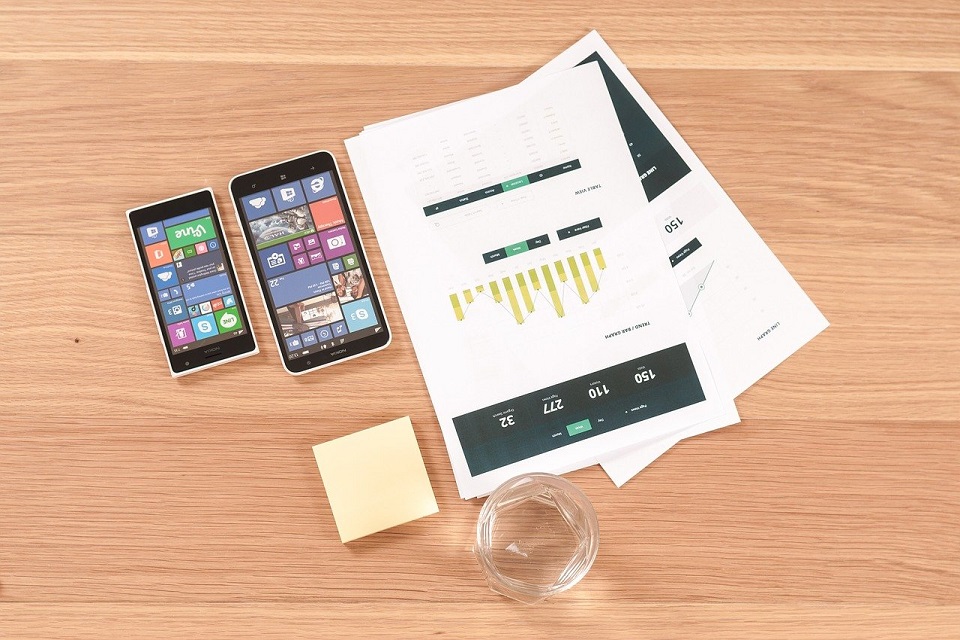A mobile app project is not just a list of features. It is also all its technical and mobile marketing aspects that must be taken into account even before starting development. Think about it to have more control over your project.
1) The operating system and type of mobile device
The ideal would be to be able to create an app for the most popular operating systems, that is, Android and iOS, but if your budget is limited, you will need to prioritize. It is a choice that is not always easy to make. Android by far dominates the overall market with a share of 87.8% while iOS has only 11.5%. The situation is different in some countries like Switzerland and Japan where iOS and Android are neck and neck. You will also have to decide if your application will be optimized for tablets, without forgetting that some of them can only be designed for smartphones.
2) The type of mobile application (native, hybrid and web app)
Do you want to build a native, hybrid, or web app? This is an important question because developing native applications can be up to twice as expensive as Maven Digital Andoriod App Development Solutions. Here are the main characteristics of each of the solutions:
– Native application. It is the most expensive solution. A native application is developed for a given system and only for that one. So if you want a native app for Android and iOS, you actually have to create two separate apps. The development of native applications is done with the programming language of each operating system: Objective C for iOS, Java for Android, C # and Visual Basic.NET for Windows. The advantage of these apps is that they provide a great user experience. Their interface is fluid and responsive. They also have the ability to implement all features specific to the mobile device such as GPS, camera, Bluetooth or fingerprint recognition.
– Web application. The web application is nothing more than a website perfectly adaptable to the size and characteristics of the screen of mobile devices, so that it looks like the native application. It is accessible via a browser (Chrome, Safari, and Firefox), so it is impossible to publish it on the stores and install it on the phone. This is perhaps its greatest advantage: any Internet user will be able to find your web application by performing a simple search via a browser. In addition, only development in HTML5is necessary to be able to reach all mobile devices, regardless of the operating system. By far the easiest and fastest, this solution is also the cheapest, but it should be remembered that a web application cannot offer specific mobile features. However, you will still be able to collect data using cookies.
– Hybrid application. Now that you know the differences between native and web apps, it will be easy for you to understand the principle of a hybrid app. It is a mix between the two making it possible to keep the logic of web technologies and, at the same time, to integrate the application more strongly into the operating system of the smartphone. It is therefore possible to develop a single application for Android and iPhone which, like a native application, will be available from the Stores and installed on the device.
So is this a perfect solution? Again, it all depends on the characteristics of your project. There may be some performance issues, such as reaction times or slower screen loading that may impact the user experience. If your application should be used often, this may not be the best solution.
3) The business model
The design and development of your app will also depend on how you plan to monetize it. Here are the main solutions:
– Paid application. Mobile users will have to make a micropayment to download the application from the Store. This model is used less and less because it is very unprofitable. Even though mobile users pay only Logo Design Sydney a small fee, the fact that they cannot test the product before purchase increases their expectations. They therefore remain very poorly tolerant of imperfections, and many of them do not hesitate to mention them in the comments, at the same time discouraging potential buyers. In this regard, it is interesting to note that iPhone users are more inclined to pay for apps and their content, while Android users make more use of free content.
– Freemium application. It is free to download to allow mobile users to test a limited version. They will still have to pay to be able to continue using the application after a trial period, acquire additional features or disable ads.
– Free application with advertising. To hope to generate significant revenue with this model, your application will need to create high traffic and achieve a good retention rate. Beware of antique software that puts this business model at risk.
4) The design
By “design” we do not only mean the logo, icon, colors and animations of the application. They are also the organization of its contents and its typography. Design is the most important step in any mobile app project. Do not neglect it: at the end of this step, you will have the prototype of your future product that you can visualize, “touch” and… change, if necessary, without much risk for your wallet. It is only after that that the developers will start to adapt it to the mobile devices of your choice. Consider preparing sketches or mockups of your application. This will make it easier for you to present it to the developers. If you don’t have any ideas for the design, there might be similar apps or websites that you would like to be inspired by. Do not hesitate to report it to the developers to allow them to better understand your expectations.
5) Description of the application
The development of your application will not be able to begin until you have drafted a specification. Before presenting it to a professional, you can always ask them to sign a confidentiality agreement.
How much does a mobile application cost?
The cost can vary from 1,000 to 50,000 euros for mobile applications containing databases, product catalogs, and feed readers or using specific smartphone hardware such as the Wi-Fi device, GPS, camera and Bluetooth. For mobile games, the cost is between 4,000 and 120,000 euros. There are free tools, like how much is my app costing, that allow you to estimate the cost of your mobile app project before you even contact the professionals.


